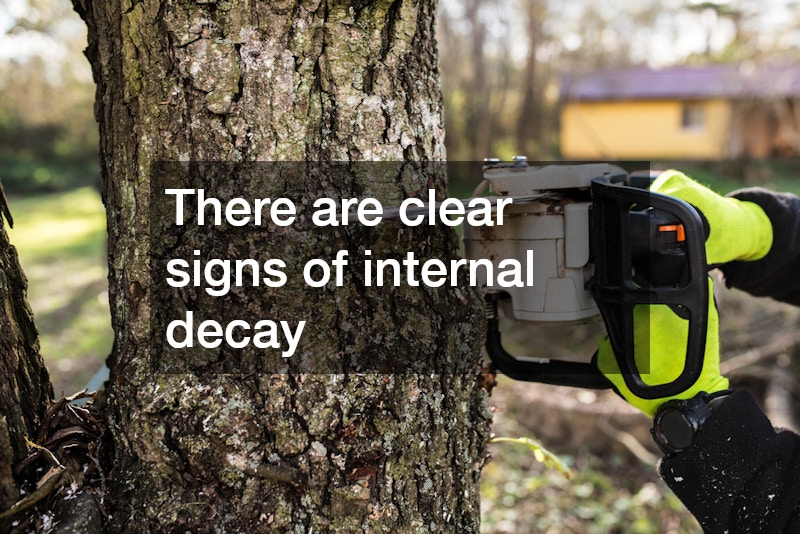A healthy yard is often a reflection of proper care and maintenance, and a critical aspect of yard health is the condition of its trees. Trees provide shade, improve air quality, and enhance the aesthetic appeal of any outdoor space. However, not all trees remain beneficial indefinitely. Sometimes, trees can become hazardous or unhealthy, impacting your yard’s overall health and safety. Knowing when to consider tree removal is critical for homeowners who want to maintain a thriving and safe outdoor environment. This blog will guide you through the key signs and factors that indicate when removing a tree is the best decision for the health of your yard.
Signs Your Tree May Need Removal
Recognizing the signs that a tree may need removal is the first step in ensuring your yard remains healthy and safe. Trees can sometimes exhibit symptoms of disease, decay, or damage that compromise their structural integrity. Common indicators include dead branches, fungal growth, cracks in the trunk, or visible rot at the base. Trees that lean significantly or have roots growing too close to structures may pose a safety risk. Understanding these signs early on can help prevent potential accidents and damage.
More specifically, if you notice large sections of your tree’s bark peeling away, cavities forming in the trunk, or mushrooms growing at the base, these are often clear signs of internal decay. A tree with widespread dead limbs or consistently dropping branches even during calm weather is also a strong candidate for removal. Additionally, it may no longer be salvageable if a tree has suffered storm damage or has been infested by pests such as beetles or borers. It could jeopardize the health of surrounding plants and your property.
Assessing Tree Health Risks
Assessing the risks associated with an unhealthy tree involves more than just visual inspection. It requires evaluating how the tree’s condition may affect your yard, home, and family. A tree in poor health can weaken over time and become more susceptible to falling during storms or high winds, which can cause significant property damage or injury. Assessing the potential risk allows you to make an informed decision about whether removal is necessary.
In more detail, the tree’s location is a critical factor in risk assessment. For instance, a dying tree close to a house, power lines, or a frequently used walkway is far more dangerous than one in an open field. Additionally, a tree with extensive root damage may not have the stability it needs to withstand environmental stress. Consulting with an arborist or tree authority to perform a thorough risk assessment can help determine if removal is the safest option to protect your property and loved ones.
Impact of Tree Removal on Yard Safety
Tree removal can significantly improve yard safety by eliminating hazards posed by unhealthy or unstable trees. Removing a tree at risk of falling can prevent damage to fences, buildings, and outdoor equipment. Furthermore, it reduces the risk of injury to family members, pets, and visitors who use the yard regularly. Safe tree removal is an essential part of proactive yard management.
Specifically, once a hazardous tree is removed, you may also see benefits such as improved sunlight penetration and better air circulation throughout your yard. These changes can foster healthier grass, plants, and other trees by reducing dampness and mold growth caused by dense tree canopies. Moreover, removing a dead or dying tree can help control the spread of pests and diseases that might otherwise affect neighboring healthy trees, contributing to a safer and more vibrant outdoor space.
Timing Tree Removal for Optimal Growth
Choosing the right time to remove a tree is crucial to minimizing disruption and encouraging healthy growth for the remaining plants in your yard. Tree removal is typically best performed during the dormant season, usually late fall to early spring, when trees are less active. This timing helps reduce soil and surrounding vegetation stress and allows for a smoother yard recovery.
Maintaining a healthy yard involves thoughtful decisions about the trees that inhabit it. While trees contribute significantly to the beauty and environment of your outdoor space, certain conditions necessitate their removal to preserve safety and overall yard health. By recognizing signs of tree distress, assessing risks, understanding the impacts of removal, correctly timing the process, and hiring skilled professionals, you can ensure your yard remains safe and thriving. Tree removal isn’t merely about removing what’s unhealthy—it’s about making space for a more vibrant, secure, and flourishing what ‘scape you can enjoy for years.

